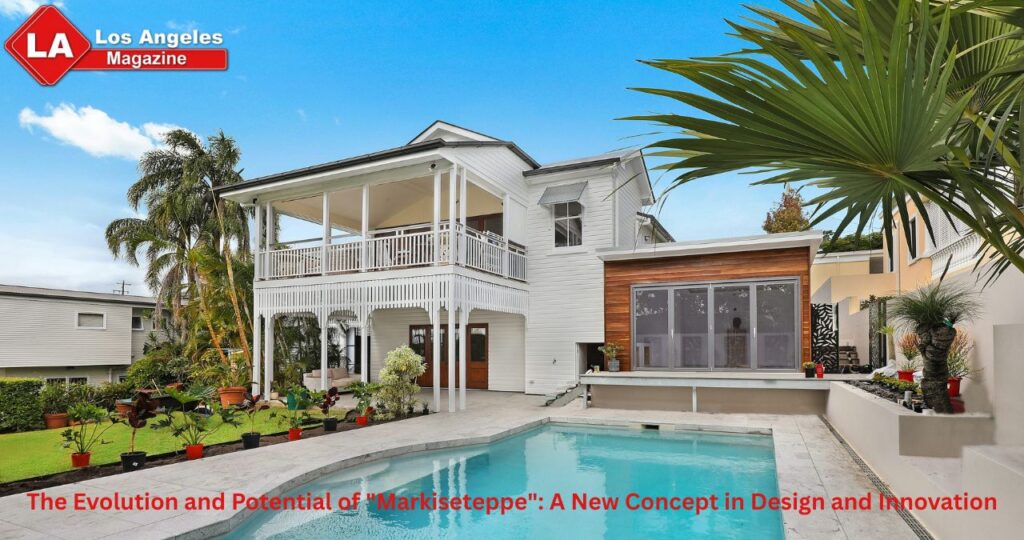In the world of design and technology, new terms often emerge to define innovative concepts or products that disrupt the status quo. One such term that is beginning to gain attention is “Markiseteppe.” While this word does not currently hold a specific, widely-acknowledged meaning in the global lexicon, it possesses the potential to represent a new product, service, or concept that could have a significant impact on various industries. This article will explore the possible implications of “markiseteppe,” and how it could evolve into a widely recognized term in the future.
Understanding the Term “Markiseteppe”
At first glance, “Markiseteppe” appears to be a fusion of two distinct words. The first part, “Markise,” is a term derived from the German language, referring to an awning or canopy used to protect outdoor spaces from sunlight and weather elements. It is commonly used in architecture and exterior design, often seen in homes, restaurants, and commercial spaces.
The second part, “teppe,” could potentially be interpreted as a variation of the word “tapis,” which translates to “carpet” in French, or it might relate to “teppe,” the Turkish word for a type of mat or rug. Together, these two components could form a hybrid product or idea that blends elements of both awnings and textiles, creating something entirely new and innovative.
The Concept of “Markiseteppe” in the Design Industry
If we consider “markiseteppe” as a new type of product, it could be a unique fusion of traditional textile materials and the functionality of modern awnings. This product might serve as a versatile outdoor textile solution that not only protects against the sun and rain but also adds an aesthetic touch to spaces such as patios, balconies, and gardens.
For example, imagine a flexible textile material that serves the dual purpose of an outdoor rug and a retractable awning. When not in use, the fabric could function as a stylish floor covering, but when needed, it could be deployed to cover a seating area or outdoor dining space, providing shade or rain protection. This combination of form and function would appeal to customers seeking both practicality and visual appeal for their outdoor living spaces.
“Markiseteppe” in Smart Home Design
In today’s world, where smart home technology is becoming increasingly popular, the concept of “markiseteppe” could take on a whole new dimension. Imagine a smart awning system that is integrated into the fabric of a carpet or mat, enabling it to adjust automatically based on weather conditions or user preferences. Using sensors, the “markiseteppe” could automatically retract or extend depending on the amount of sunlight, temperature, or rainfall, creating an intelligent, adaptable solution for outdoor spaces.
Such a product would fit well into the broader trend of home automation, where technology is used to enhance comfort and convenience. Additionally, the ability to control the awning or carpet through a mobile app or voice command would appeal to tech-savvy consumers looking for cutting-edge, efficient solutions for their homes.
Sustainability and Eco-Friendly Innovations
Sustainability has become a key focus in the design and manufacturing industries. Consumers are increasingly looking for products that not only serve their practical needs but also have a minimal environmental impact. A “markiseteppe” product could be designed with sustainability in mind, using eco-friendly materials that are both durable and recyclable.
For example, the fabric used in the “markiseteppe” could be made from recycled plastics or organic fibers, ensuring that the product is both functional and environmentally responsible. Additionally, the integration of solar panels into the fabric of the awning could allow the product to generate energy, powering small appliances or outdoor lighting. This would not only reduce the environmental footprint but also offer a practical benefit for homeowners seeking to reduce their energy consumption.
Potential Applications of “Markiseteppe”
The versatility of a product like “markiseteppe” could open up numerous possibilities across various sectors, from residential to commercial and beyond.
- Residential Use: For homeowners, “markiseteppe” could revolutionize outdoor living by offering a multifunctional solution that combines the comfort of a rug with the practicality of an awning. Whether it’s for a patio, balcony, or backyard, this product could serve as a stylish, weather-resistant surface that provides shade or shelter when needed.
- Commercial Use: In the commercial sector, restaurants, cafes, and retail spaces could benefit from “markiseteppe” as an elegant and functional addition to their outdoor seating areas. A café with an outdoor terrace could use retractable awnings to provide comfort for customers, while the product’s textile aspect could enhance the overall aesthetic of the space.
- Event and Exhibition Spaces: Event organizers and exhibition planners could incorporate “markiseteppe” into temporary installations or outdoor events. The product could be easily deployed and retracted, providing protection from the elements while enhancing the look and feel of outdoor festivals, weddings, and trade shows.
- Urban Development: In cities where space is limited, urban planners could use “markiseteppe” as a solution for outdoor spaces like public parks, plazas, or rooftop gardens. The dual-purpose nature of the product would allow city dwellers to enjoy their outdoor areas year-round, regardless of weather conditions.
Challenges and Considerations for “Markiseteppe”
Like any new product or concept, “markiseteppe” would face several challenges as it seeks to enter the market. First, there would be the challenge of convincing consumers and businesses of its value and practicality. The product would need to offer clear advantages over traditional awnings, carpets, and other textile-based solutions in terms of durability, cost-effectiveness, and ease of use.
Moreover, the integration of smart technology into the design could pose additional challenges in terms of cost, installation, and maintenance. Manufacturers would need to ensure that the product remains affordable while maintaining high-quality standards, especially if they plan to introduce advanced features such as sensor-driven automation or solar energy generation.
The Future of “Markiseteppe”
As consumer demand for innovative and multifunctional products continues to rise, “markiseteppe“ holds significant potential to disrupt traditional design paradigms. With the right blend of functionality, aesthetics, and sustainability, it could become a staple in both residential and commercial spaces. As the product evolves, it could push the boundaries of what we expect from outdoor living solutions, blending design, technology, and environmental responsibility in one seamless offering.
In conclusion, “markiseteppe” represents a new frontier in design and innovation, combining elements of awnings and textiles to create a product that is both functional and aesthetically pleasing. While it may be a new concept today, its potential applications in the design industry are vast, and as technology and sustainability trends continue to shape consumer preferences, the future of “markiseteppe” looks bright. Whether in smart homes, commercial spaces, or outdoor environments, this innovative product could change the way we think about comfort, style, and practicality in our daily lives.



